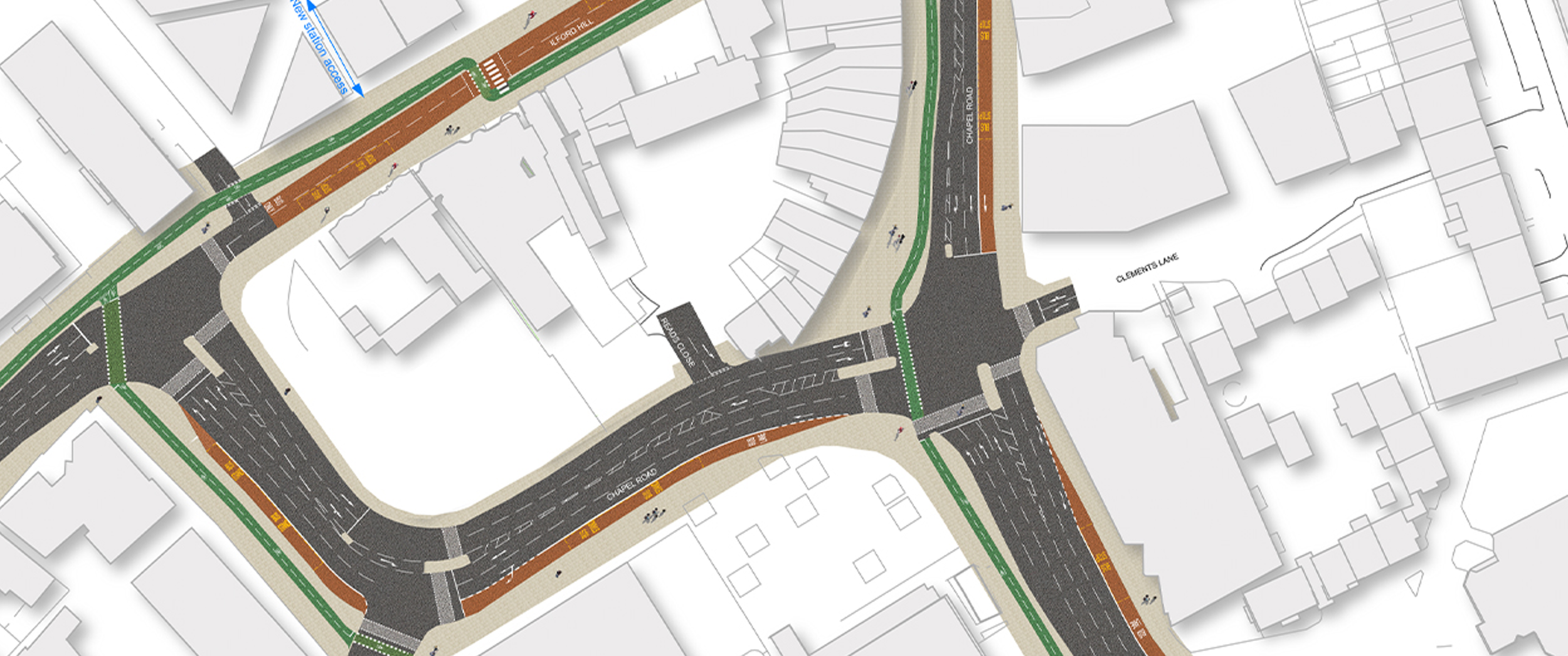Project: Transforming Traffic Management in Ilford Gyratory, London
Location: Ilford Gyratory, London
Client: Momentum Transport Planning
Key Outputs:
Microsimulation model (TfL MAP compliant)
Journey time impact assessment
Video preparation
Innovation:
This project showcased our ability to adapt to unique challenges. We used various modelling packages to carry out the assessment; LinSig for signal timings, VISSIM to model junction interaction, and TfL’s ONE model that provided traffic forecasting.
This case study exemplifies our approach at Modelling Group: combining our technical expertise with innovative solutions to tackle complex challenges in transport planning. It highlights our ability to work closely with clients and regulatory bodies, ensuring our models meet the highest standards and contribute to effective urban planning.
The Challenge:
The proposed improvement scheme in Ilford, London, aimed to rebalance a car-dominated area in favour of a more pedestrian, cyclist, and public transport-friendly environment. The scheme covered the strategic network connecting the A4123 Cranbrook Road/Ilford Lane and the A118 Ilford Hill/Winston Way. The challenge was to assess the impact of this scheme on the local traffic and develop a model that accurately represented the complex interactions of vehicles around the gyratory system.
Our Approach:
At Modelling Group, we took a comprehensive approach to this challenge. We were commissioned to develop the traffic modelling required for this project. Our modelling included both microsimulation modelling (PTV VISSIM) to assess journey times through the network, with a strong focus on Public Transport, and more traditional LinSig modelling to provide both signal timings for the scheme and an assessment of capacity.
Close coordination between Modelling Group, Transport for London (TfL), and the clients (Momentum and LBR) was maintained through bi-monthly progress meetings. TfL provided forecast traffic growth using the strategic ONE Model and also approved the modelling, ensuring it was carried out to VMAP, LMAP, and TAG Compliant standards.
The Outcome:
Our modelling scenarios included a base model, validated using September 2019 data, a future base (2026), and a Do Something (2026). The successful completion of this project demonstrated our ability to use various modelling packages to carry out comprehensive assessments.





